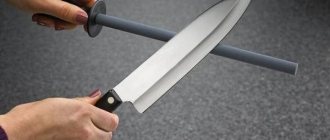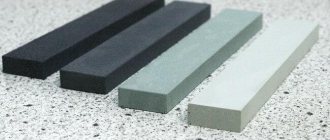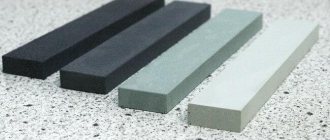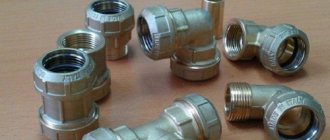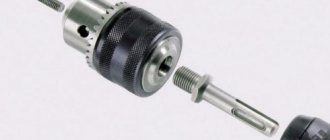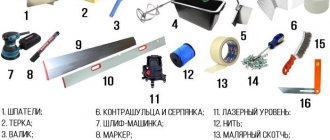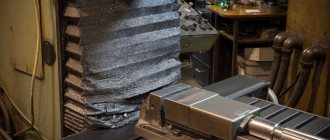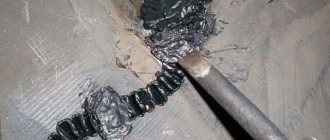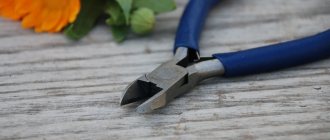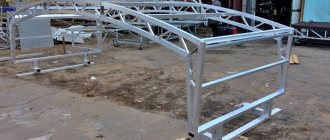Meet a new article from Arsenal Masters RU specialists. All about sharpening stones. Classification, types of stones. Recommendations and advice on the selection, storage and alignment of stones, and the process of sharpening tools.
There are many sharpening stones, it’s difficult to choose, and there are also many nuances and features. We have collected information on them and added tips and recommendations. We are waiting for your feedback, share your experience!
Classification of sharpening stones
There are synthetic and natural stones.
- Synthetic stones are divided according to the type of material into water, ceramic and diamond.
- Natural stones work with water or oil.
The wide selection of stones is also due to the different grain sizes of abrasive stones. This allows you to remove chips, remove minor damage, and bring the sharpened surface to “zero.” In practice, water stones are more often used.
The popularity of manual sharpening is easily explained:
- The hardness and edge of the steel does not deteriorate because no heat is generated.
- A huge selection of grain sizes allows for any fine sharpening.
- Precise cutting geometry (no rounded chamfer surfaces such as felt or rubber discs).
- No expensive equipment needed.
- In their practice, Masters reach perfection!
How to Make Dull Blades Sharp: Dull blades have a rounded edge on the cutting edge, therefore, when sharpening, it is necessary to remove material from the chamfer surfaces to again achieve the perfect “intersection” of the 2 planes of the blade chamfer.
Best Knife Sharpening Stones for 2022
The domestic market is represented by a large variety of sharpening stones. However, according to experienced users, it is best to use water stones for sharpening kitchen knives. This is due to the fact that they are perfect for processing even hard steel and provide the maximum level of sharpness of the sharpened tools and utensils.
When choosing a sharpener, you need to pay attention to the degree of its grain size. In order to recognize it, you need to familiarize yourself with the markings, which, as a rule, are applied to the edges of the bar. In addition, such markings, which indicate the grit level of the sharpener (measured in grits), must be indicated directly on the packaging itself in which the whetstone is sold.
Where can I buy? You can purchase a sharpening stone for kitchen knives in online stores by placing an online order. In addition, sharpeners that are sold on a popular Internet resource called Ali Express have recently become very popular among domestic consumers. This is due to the fact that the products presented on this site are of low cost and acceptable quality.
Synthetic water stones
These are the most popular and productive abrasive stones. They have an open-pore microstructure with the inclusion of homogeneous particles; the abrasive grain is quickly crushed. Requires correction when worn.
Structure of synthetic abrasive stones Sharpening stones mainly consist of a binder (matrix) in which abrasive particles (alumina, carbides, natural semi-precious stones, diamond dust) are embedded.
The effectiveness of the stone depends on the combination of the hardness of the binder and the quality of the abrasive particles. The binding agents used in synthetic water stones are generally dye-like substances, whose hardness can be determined by composition and firing temperature level. Open structure Closed structure Abrasive stone materials
Silicon carbide abrasive is very effective and is therefore used for coarse abrasive stones, while corundum is used for finer abrasive stones.
Binder
The soft bond allows the abrasive particles to be constantly exposed during use, making the stone very effective. These stones are ideal for extremely hard low alloy steels. Tool steels with coarse-grained alloy components (for example, chromium and vanadium) require a stone that wears slower and holds its shape longer. The binder is stronger - the stone remains flat longer.
HOW TO USE SYNTHETIC WATER STONES
Before use, stones must be soaked in water for 10-15 minutes. Water serves as a washing medium, which prevents clogging of the stone pores with abrasive particles and preserves its abrasive properties. If it is not sufficiently rinsed with water, the abrasive debris becomes a paste that reduces the abrasive properties of the stone. ON A NOTE! Professionals actively use this fact. By using it, they achieve a finer abrasion, compensating for the large steps in grit when moving from a coarser stone to a fine-grained stone. Most aqueous (water) stones have a fairly soft, open-pore compound that continually exposes fresh abrasive particles during sharpening, resulting in high efficiency. As a result of wear, regular adjustment of water stones is required.
Item: MT #1010 Sharpening Stone #1000Japanese abrasive stone Suehiro Cerax 1000 grit on a stand with nagura M00013149 | Article: MT #3000 Sharpening Stone #3000Japanese sharpening abrasive 3000 grit Suehiro New Cerax 206x73x23mm stand with Suehiro nagura | Article: MT #GMN-150Sharpening abrasive 15000 Suehiro Gokumyo 205 x 73 x 20 mm stand with restoration stone Suehiro |
Bottom line
The most recommended sharpeners for household (kitchen) knives are water-based. In addition to the order of magnitude superior speed of the process (relative to other types), these stones provide delicate processing of the cutting tool. It is important to consider the material of the knife. If the device is made of metals that are vulnerable to rust, it is worth considering other types of sharpeners. When using a non-water-based type of stone, sharpening will take longer, but the knife blade (not resistant to corrosion) will last longer.
Speaking about the grit of stone for household knives, it is recommended to consider specimens with an indicator of 1500 grit or more. A large fraction can damage the integrity of the blade, especially with frequent use.
The sharpener should be maintained taking into account the characteristics of the type of stone:
- The water type implies the presence of a vinyl box. These boxes prevent moisture evaporation, which has a beneficial effect on such sharpeners. It is also unacceptable to contain waterstone at low temperatures. If you break this rule, the stone will certainly burst.
- It is recommended to keep sharpeners of other types in conditions that prevent excessive formation of dust. A box that closes securely is suitable for this. If such a sharpener becomes contaminated with dust, the particles will become clogged and the tool will lose effectiveness. It is not recommended to allow the stone to come into contact with other surfaces; before placing it in the box, it is necessary to wrap the tool in paper. Wrapping in a cloth napkin is also allowed.
The modern market offers an abundance of sharpening stones; it is not uncommon for an inexperienced user to be at a loss when choosing. In order not to make a rash purchase, it is necessary to take into account the parameters of the grit and material of manufacture, as well as the form factor of the product and dimensions. Stones with a strong reputation will last an impressive period of time if the user does not neglect the basic rules for maintaining the sharpener.
Ceramic stones
A relative innovation are ceramic water stones with particularly high wear resistance for professional use. Ceramic stones have a very strong bond and show little wear. However, to achieve good sharpening performance, it is necessary to use very high quality and wear-resistant abrasive particles (such as Shapton). Shapton ceramic stones hardly absorb water. With them, 1 minute of soaking is enough.
Main criteria when choosing a stone
Before purchasing a tool you must:
- Select abrasive material. In everyday life, ceramic products are more often used, for example, a boat-shaped block. A double-sided sharpener with a rough and smooth surface is often found. Diamond stones are rarely used in professional sharpening of kitchen knives. The high price limits the spread of natural abrasives.
- Pay attention to graininess. When sharpening, use bars with a grain size of 600-800 units. To polish the edge, bars marked 1500-2000 are used. Bars with a grain size of more than 2000 are intended for professional work.
- Consider the scope of use. The size of the block should exceed the length of the blade by 1.5-2 times.
Diamond stones
. As an alternative to Japanese water stones, you can use diamond sharpening stones. In these whetstones, abrasive diamond granules are deposited in a nickel matrix as a thin layer on a metal substrate. They provide high flatness, durability, provided that the diamonds are of high quality (monocrystalline). The diamonds are applied to an extremely flat, warp-resistant and unbreakable base plate. Thus, diamond stones are extremely wear-resistant and do not chip like abrasive grains. High-quality monocrystalline diamonds guarantee remarkable sharpening speed even when working with the hardest high-alloy tool steels. It is recommended to moisten diamond stones with water and grind with light pressure. Made from high-quality single-crystal diamonds, DMT stones (USA) are especially wear-resistant and are famous for their perfectly smooth surface. DiaSharp 220 COARSE (Coarse) DMT D8X stone is recommended as a complement to water stones. It's great for finishing the backs of flat chisels, chisels, or leveling water stones. Warning: Avoid cheap products that are usually made from (short-lived) polycrystalline diamond dust.
Article: DMT D8EEDiamond abrasive stone DiaSharp 200 x 76 mm 8000 grit beige DMT D8EE | Article: DMT W250EFWBDouble-sided diamond abrasive stone DMT DuoSharp 250 x 100 mm 1200 / 600 grit X-Fine / Fine | Article: DSS-115FCMT DSS-115F Diamond whetstone, fine grain D25 in leather case 115 x 25 x 3 mm red |
Grain
The most important parameter that determines the nature of work with a sharpening stone. The larger the granules included in the bar, the more metal it will remove in one pass of the blade across the surface. Accordingly, finishing stones are almost smooth to the touch - tactile sensations simply do not provide information about the size of the grains.
What type of sharpening stone do you have at home?
NaturalArtificial
The grit measurement scale differs in countries that produce knife sharpening materials. Thus, in the USSR the size in microns was adopted, which, however, is still used today as an equivalent. But Western manufacturers use a system of conventional units called grit, that is, the degree of roughness. This quantity is dimensionless.
The general rule is this: the lower the grit value, the larger the particles and rougher processing await the owner of the knife. Large values of several thousand grit indicate finishing, grinding and even polishing stones.
Today there are several standards in force:
- FEPA (for European manufacturers of sharpening stones);
- JIS (Japanese products are labeled according to it);
- ANSI (adopted in the USA and applies to American products).
Expert opinion
Levin Dmitry Konstantinovich
Grit roughness values are not exact values and values may vary among different standards. Therefore, you need to purchase a stone for a knife based on your experience and needs, trying different options.
Natural water stones
Natural stones, including the Belgian Brocken or the Slovakian Rozsutec, are sedimentary or calcareous rocks with embedded corundum, oxides, quartzites or semi-precious stones (such as garnets). Due to their slightly heterogeneous structure, they combine particularly well with hand-forged steel.
Arkansas Novaculite sharpening stones are very dense and wear-resistant. They are well suited for straightening chisels for wood carving and turning tools. ATTENTION : It is not recommended to combine oil (ordinary abrasive) and water stones together, as oil reduces the effect of the stones. Look at natural stones Nagura, ARKANSAS
Article: Di 711518Natural Japanese water stone (Abrasive stone) Binsu 800-1200, 220*65*62 mm | Article: Di 711519Natural Japanese water stone (Abrasive stone) Amakusa 400-800, 220*65*65 |
Article: NB 895600Natural abrasive stone 6000-8000 100x40x12 mm Arkansas white Narex | Article: MT#NAGURA-200/711301Nagura Botan 3000 natural stone 50x40x30mm Miki Tool |
Natural oil stones
When combined with oil, some stones form a lubricating suspension that increases their effectiveness. Porous stones, for example Norton (India). The stone is usually pre-oiled, requiring only a few drops of honing oil on its surface before sharpening. Closed-cell stones only absorb small amounts of oil. A few drops of honing oil on their surface are enough. Unlike water, oil does not wash the stone, so it clogs faster. It can be cleaned by wiping it with oil. Check out Oil Stone Suehiro
Which sharpening stones to choose
Basic level:
As a basic equipment for manual sharpening, it is recommended (recommendation of the manufacturer DICTUM) a combination of stones with grits of 1000 and 6000 grit. This combination is minimally sufficient for editing and optimal for beginners. Purchasing a combined stone 1000/6000 with these grits will save money.
Article: Di 711007Japanese combined abrasive block 1000 / 6000 150x50x25 mm Sun Tiger 711007 | Article: Di 711006Japanese combined abrasive block 1000 / 6000 207x66x36 mm King 711006 | Article: Ver 05M0901-711005-AMSharpener Veritas Sharpening System II plus Japanese abrasive whetstone combined 1000 / 6000 King |
For advanced users:
- Coarse whetstone 220 grit (No. 711999) for chipping, dressing, etc. Japanese abrasive stone 220 King 711999
- Sharpening stone with grit 1000 - 1500 - for normal sharpening. For example Natural Japanese water stone Jyo-Haku 1000-1500 711620
- The correct stone with a grit of 6000 is for polishing and straightening edges. Example Sharpening abrasive 6000 Suehiro with nagura Suehiro white MT 6000 M00014380
- Nagura Cleansing Stone
For grooved chisels - cutters - you will additionally need:
- Shaped stone with 4000 grit - for straightening the inside. Example Abrasive water stone PETROGRAD BREEZE 4000 M00015241
- Nagura Cleansing Stone
For all:
- Straightening block for precise dressing of uneven water stones (Strutting stone 100 grit 711299)
- Whetstone holder
See everything for sharpening from Dictum
Sets of sharpening stones
To provide you with the best basic equipment for different tools and steels, we have collected various sharpening sets for you. You can choose a set of sharpening stones that suits you.
Article: RN Set N4: 150, 360, 500. 1000, 1500, 2000Sharpening set PETROGRAD N4 for sharpening knives 15 x 15 x 120 mm 6 stones (150, 500, 1000, 1500, 2000, 4000 grit) | Article: M00003437-M00017823-M00014093-AMStarter set for sharpening knives, planes and chisels Petrograd No. 1: Sharpener, protractor and set of sharpening stones | Article: Arma21Starter set for sharpening knives, planes and chisels N 3: cradle box, sharpener, template, protractor and set of sharpening stones |
How to use sharpening stones
During use, stones must be placed firmly on a non-slip surface or stand. To ensure stability, use a whetstone holder with non-slip rubber jaws, a rubber pad or a non-slip mat.
And Camellia oil 705281 will help you further protect carpentry, carving, and kitchen tools from corrosion.
Question answer
How to clean the bar when it gets dirty?
Under running water using a not very hard brush. Many people wipe off traces of the suspension after drying with a regular eraser.
What else can you sharpen and trim stones besides knives?
Relatively speaking, everything that is less hard and preferably plastic (metal): scissors, chisels, manicure tools, axes, scythes and sickles (if you are making a film about the harvest in pre-revolutionary Russia).
What oil should I use when sharpening with Arkansas?
In general, this is not important, since any oil will give the desired effect. Considering that knives can be used for cooking, you can take edible vegetable oil - olive, linseed. For tourist and technical knives, a spindle or ballistol is better suited.
Using a stone to sharpen knives indicates that a person loves knives and does not mind spending a few minutes (or tens of minutes) on sharpening and finishing. Well, a good sharpening stone pays its owner with good results.
Leveling the stones
When sharpening tools with straight cutting edges, it is very important that the whetstone itself is completely flat. You can check this by pressing the end of the ruler to its surface. If light penetrates through the gap, then the stone is uneven and must be polished in one of the possible ways. The simplest of them is dressing using a diamond lapping plate. You rub the well-watered stone in circles on a lapping plate until the surface is smooth. Light surfaces show smooth areas of stone, while darker areas have not yet come into contact with the leveling stone. Repeat the operation. Process until the surface becomes completely light, constantly washing off the paste. Alternatively, you can use kits with 100 grit sandpaper (soaked with water) placed on a flat granite stone slab (gabrodiabase). A specialized mesh for leveling abrasive stones functions in a similar way.
Nuances
A classic straight razor (“safe”) allows a man to effectively deal with overgrown stubble on his face.
A good shave is only possible with a sharp blade. A straight razor should be sharpened at least once every 2-3 months.
The procedure can be done on your own at home. Its correct execution is the key to obtaining a good result.
Sharpening involves mechanical processing of the cutting edge of the tool.
You should sharpen the blade of the old “danger” in stages:
- Carrying out rough sharpening. The procedure is performed to restore or correct the geometry of the leads that form the cutting edge of the blade plate (sting). At this stage, the problem of chipping is solved, and the edge bends to the side are corrected.
- Finishing the tip and the blade plate itself. The manipulation is similar to honing in metalworking. At the second stage, the exact dimensions of the tip and the cleanliness of the blade surface are achieved. Finishing removes risks from the abrasive applied at the initial stage.
- Formation of an ultra-thin cutting edge by straightening it.
How to properly sharpen a dull straight razor yourself:
- sharpening is a manipulation associated with the risk of injury. Follow safety regulations!
- ensure that the straightening belts are tightly tensioned - this will avoid bending the cutting edge;
- be sure to determine the correct sharpening angle;
- Avoid pressing hard on the blade. Otherwise, there is a risk of damaging it. The blade must be in close contact with the surface of the sharpener at all times. ;
- When performing movements in both directions, try to keep the pressure on the blade equal. Otherwise, you won’t be able to sharpen the tool evenly;
- Cover the comb with tape in advance to prevent it from being scratched;
- You can sharpen the “harm” to maximum sharpness by bringing the thickness of the cutting edge to a minimum. However, the tip will become brittle.
The optimal indicator of sharpness for a razor is its ability to easily, effortlessly cut hair “in weight”.
Storing sharpening stones
When storing synthetic stones, it is IMPORTANT to differentiate between those that must be kept dry and those that can be kept permanently in water, it is best to use a lidded plastic tub in which the stones can be kept permanently in a water bath. Stored in water: King, Solar Tiger, etc. A little vinegar or disinfectant should be added to the water to prevent algae growth. Household detergents should not be used - they destroy the bond of the stone. To prevent cracking, sharpening stones should never be exposed to frost! When using highly calcareous water, do not let the stones dry out too often; otherwise, lime will accumulate and reduce the effectiveness of the stones.
Article: Di 711005Japanese combined abrasive stone 1000 / 6000 grit 205*50*25 mm King 711005Reviews (1) | Article: KTV abrasive 70x20x200 I-2000-V/-VBSharpening abrasive (abrasive water stone) PETROGRAD 200 x 70 x 20 mm 2000 grit | Article: MT #CR-3800 / Di 711024Combined Japanese water stone on a stand 1000 / 3000 183 x 63 x 32 mm Suehiro New Cerax |
Dry storage: Shapton, Suehiro, Naniwa, Jinzo sharpening stones, etc.
Article: MT #6000Sharpening abrasive 6000 Suehiro 206x73x23mm on a stand, with white grit | Article: Di 711533Japanese combined sharpening abrasive 1000/3000 134x40x26mm Suehiro | Article: MT #NGR-10Nagura 1000 Suehiro stone for stones 1000-2000 grit, 73x40x28 mm |
Oil sharpening stones should be handled with care. Keep them clean and free of oil, as oil prevents the stones from absorbing water, limiting their abrasive effect.
Article: MT OS-62NJapanese oil abrasive stone beveled 320 grit 25 x 6 x 2 x 100 mm Oil Stone Suehiro | Article: MT OT-13N |
